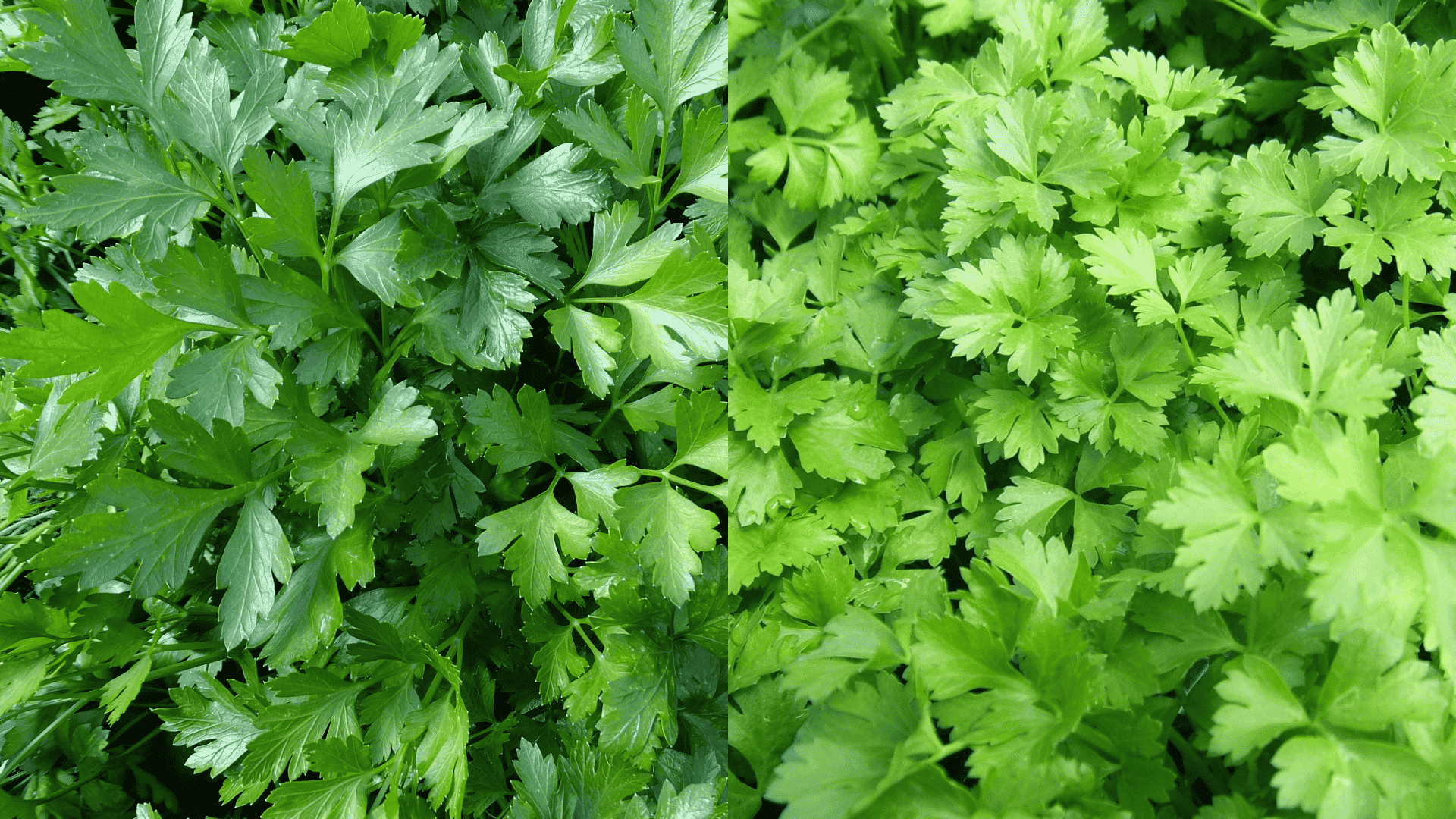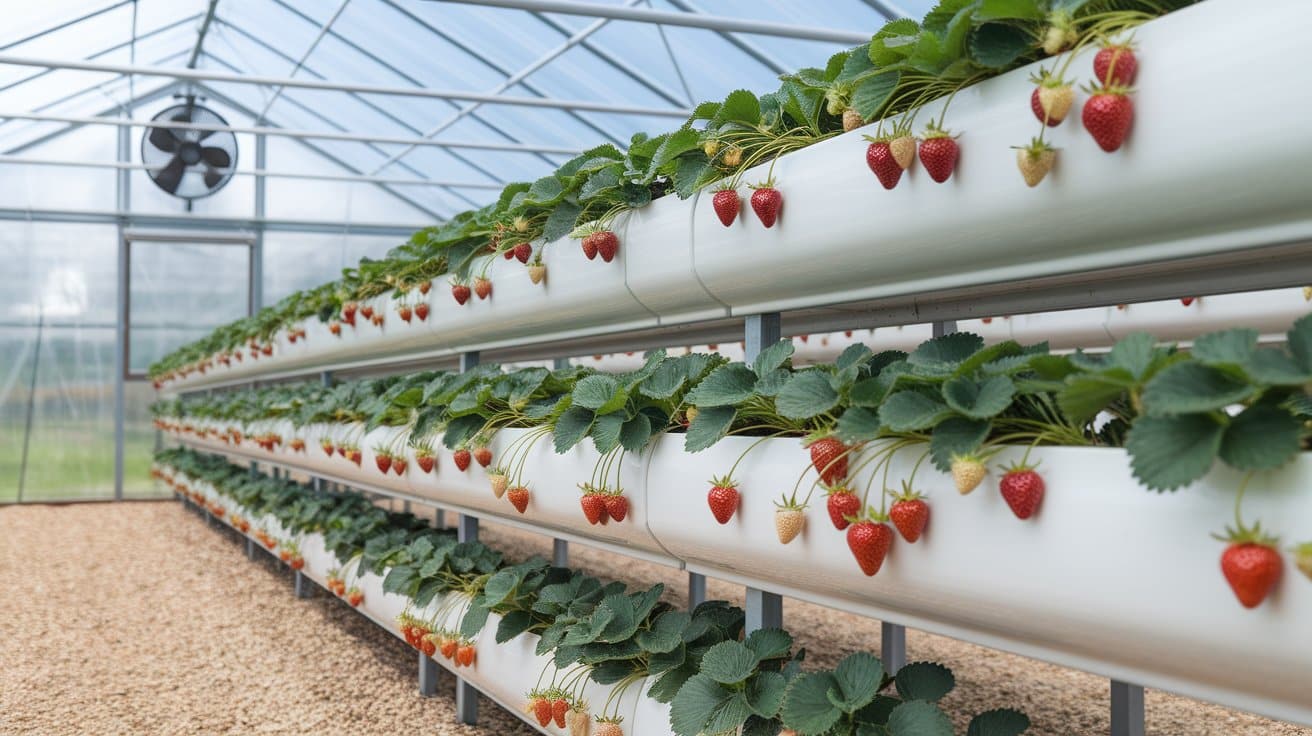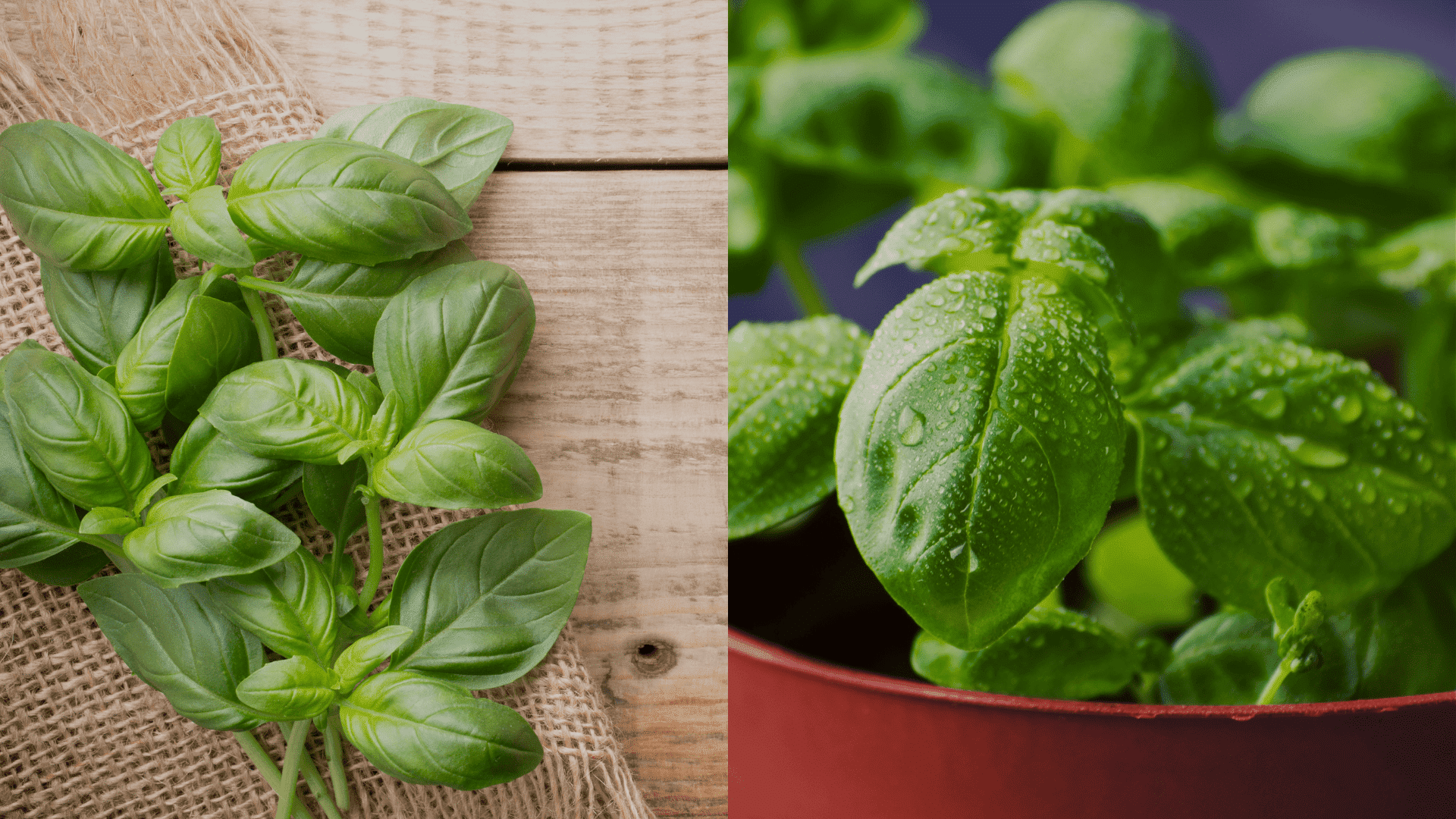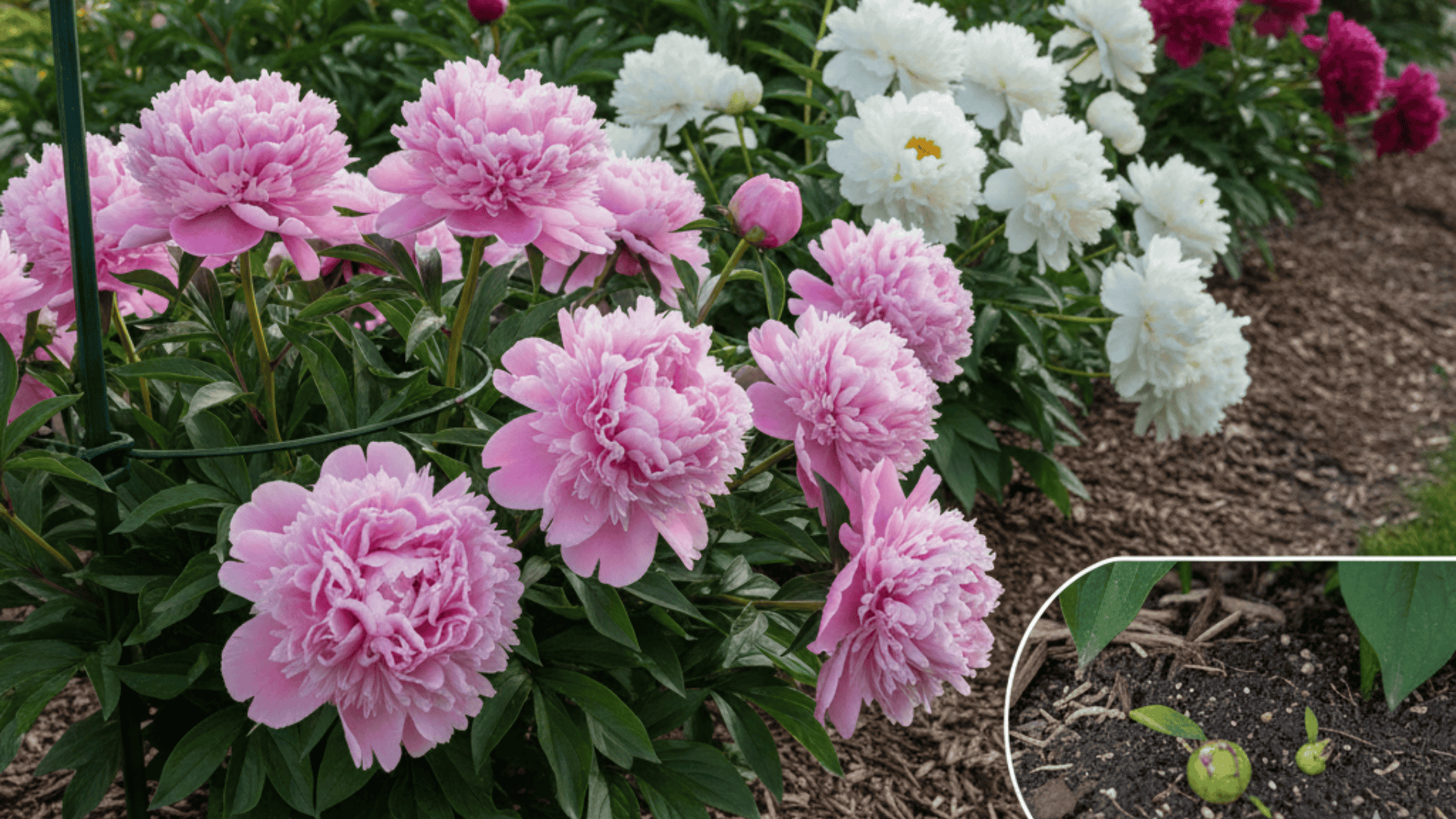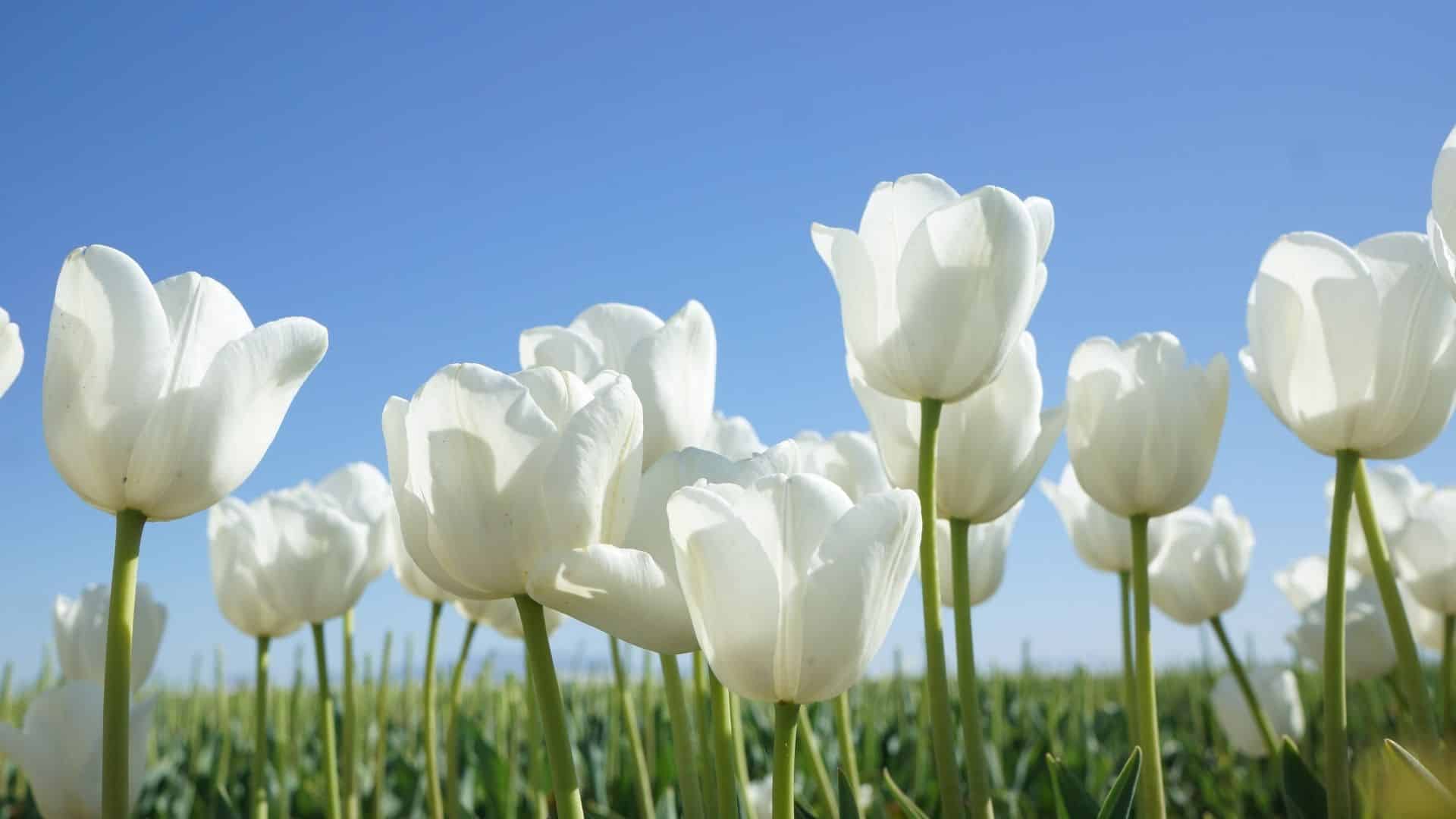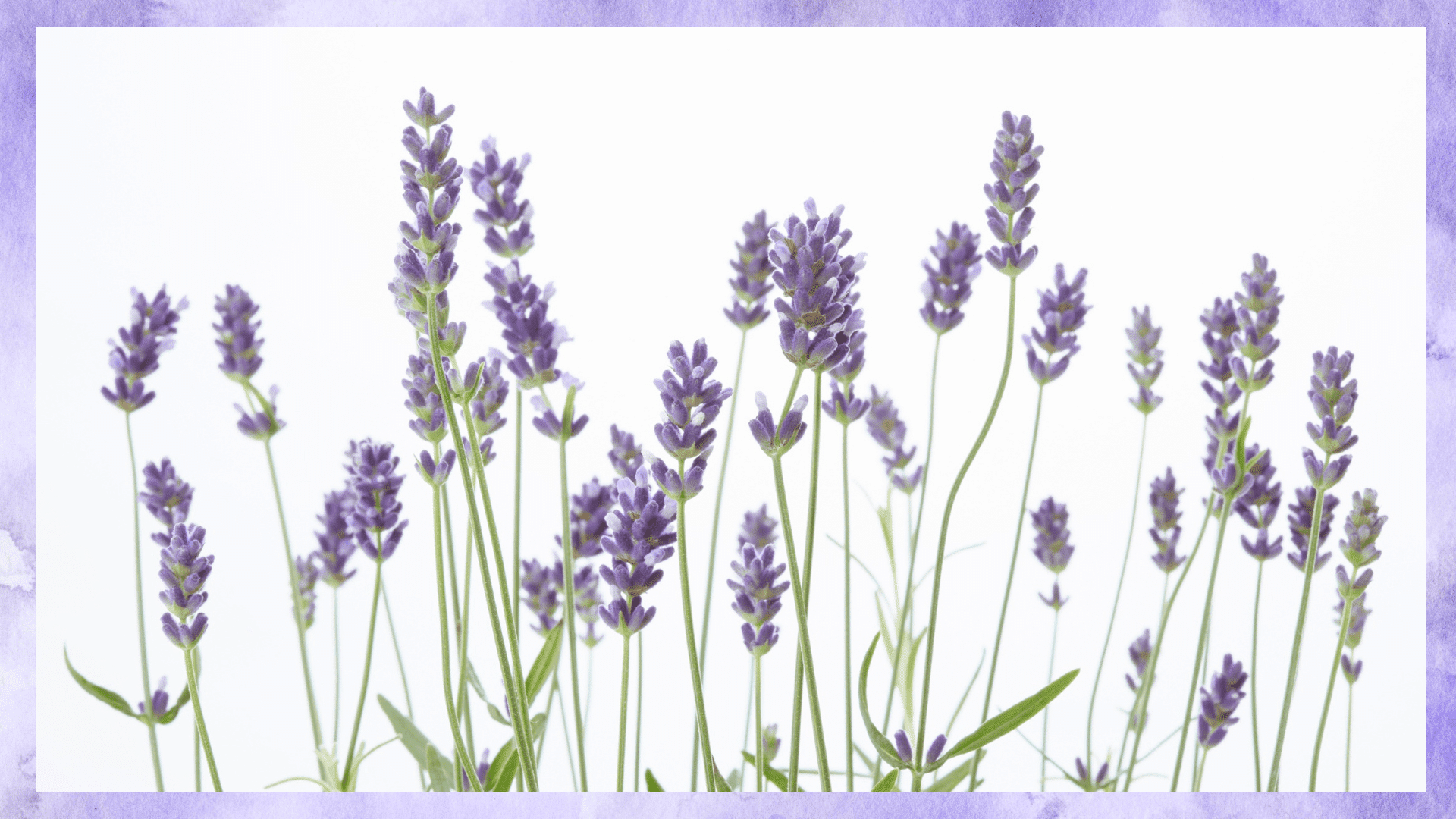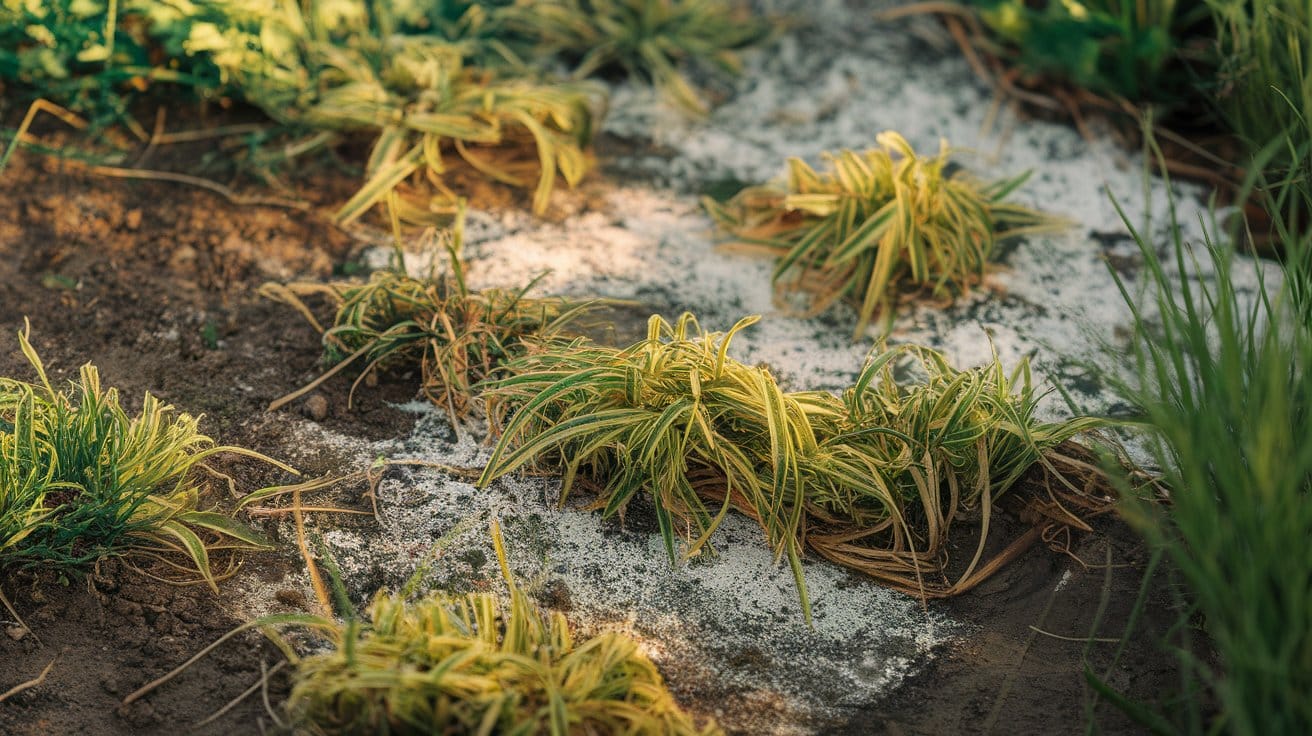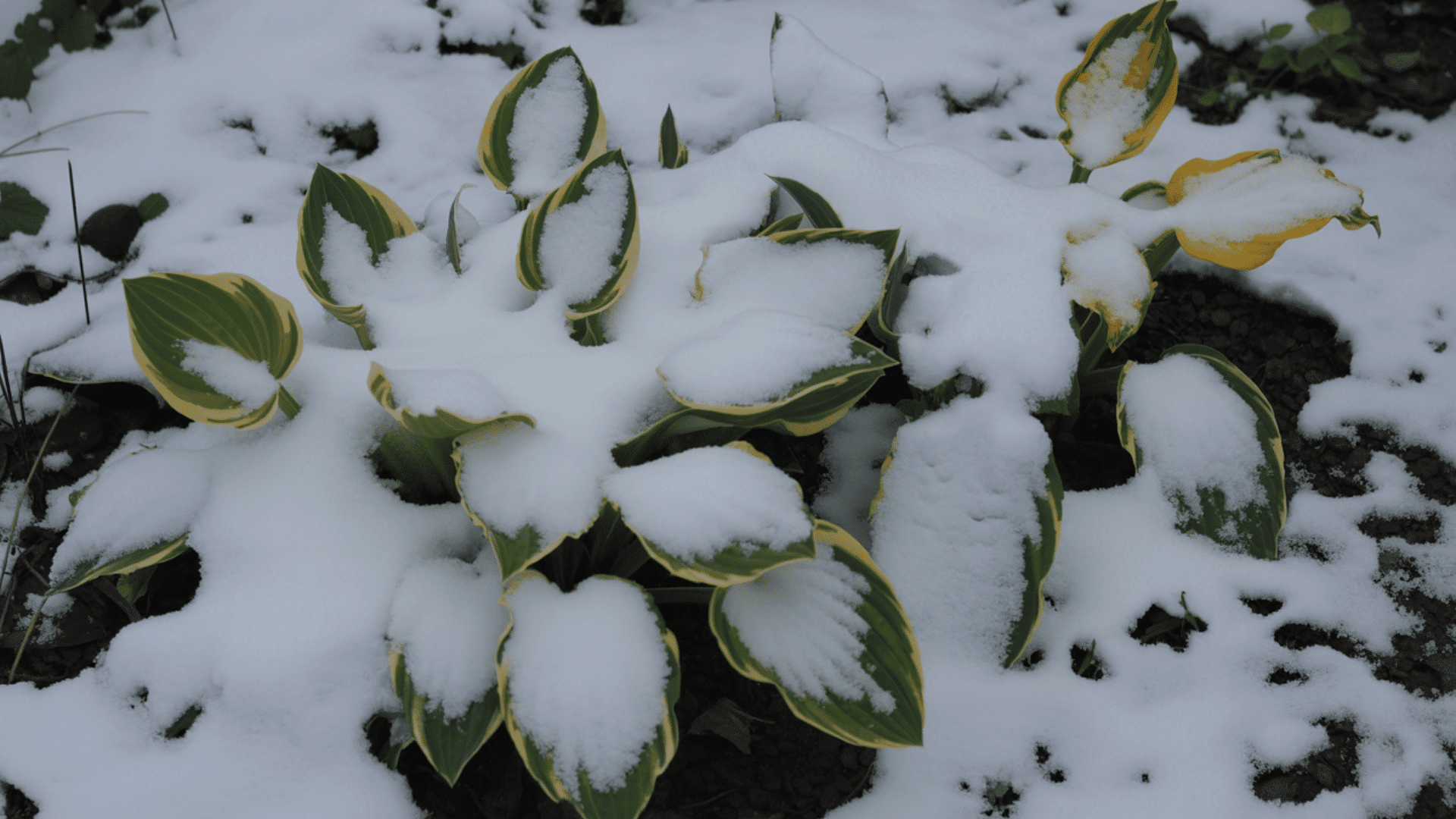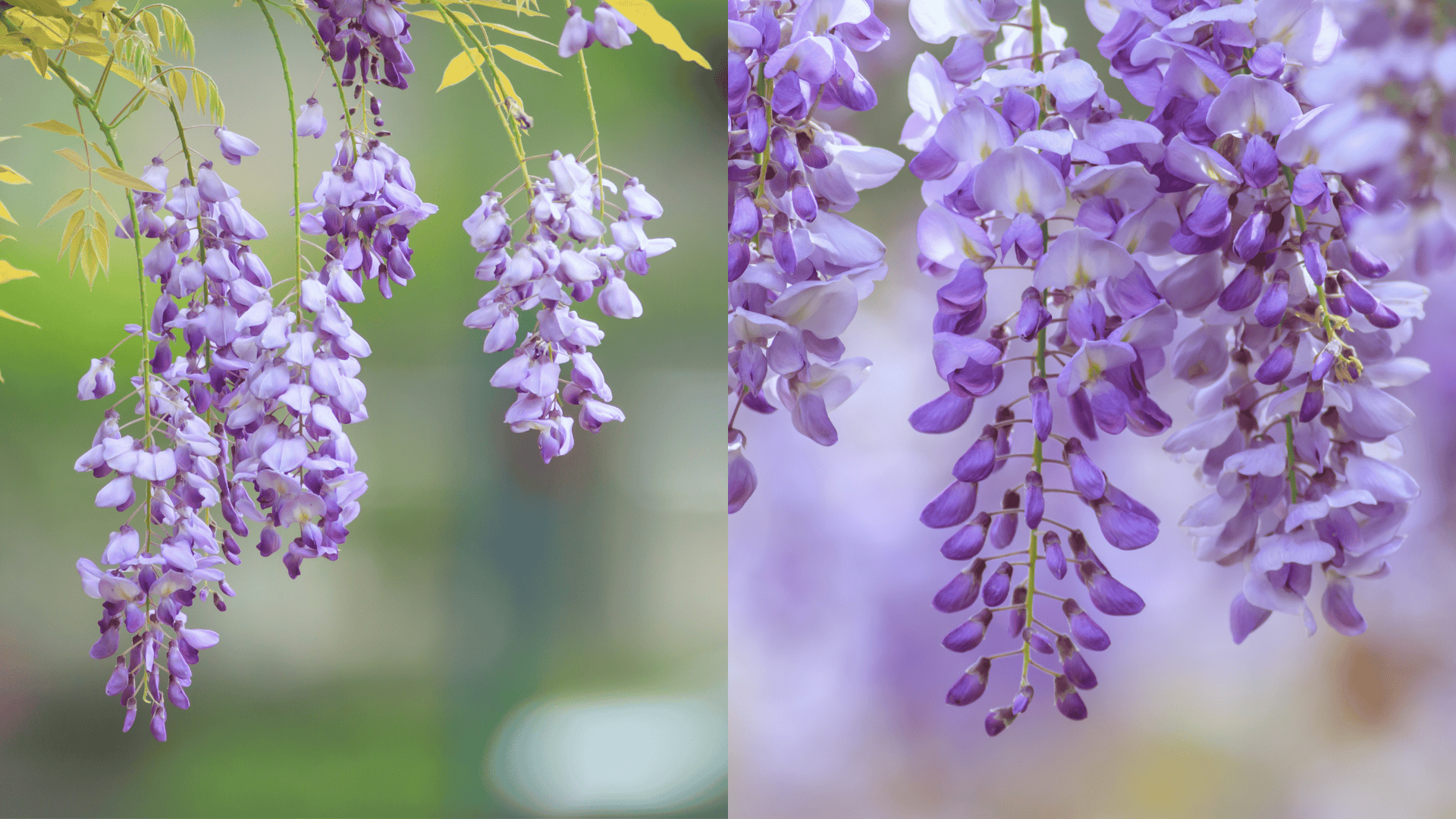Parsley is one of the most useful herbs you can grow in your garden.
This hardy biennial brings fresh flavor to countless dishes while offering remarkable benefits to the plants around it.
When you understand which plants thrive alongside parsley, you can create a healthier, more productive garden that naturally resists pests and encourages beneficial insects.
You’ll learn which combinations work best and which pairings to avoid for enhanced plant growth and natural pest control.
What is Companion Planting?
Companion planting is the practice of strategically placing different plant species together so they can support each other’s growth and health.
This age-old gardening technique works by creating beneficial relationships between plants.
When done correctly, companion planting offers several advantages:
- Improves soil health by promoting diverse root systems and nutrient cycling
- Deters pests through natural repellents and confuses insects that target specific crops
- Attracts pollinators and beneficial predators that keep harmful insects under control
- Maximizes garden space by pairing plants with compatible growth habits and resource needs
- Reduces the need for chemical interventions like pesticides and synthetic fertilizers
Benefits of Companion Planting with Parsley
Parsley offers multiple advantages when planted alongside other vegetables and herbs in your garden.
- Pest Control: Parsley naturally repels harmful insects, making it an excellent protective companion. Its strong scent masks the aroma of crops that pests typically target.
- Pollinator Attraction: The herb draws beneficial insects like hoverflies and ladybugs. These creatures prey on aphids and mites while supporting pollination.
- Improved Growth: Plants near parsley often show enhanced vigor and productivity. The herb’s root system creates favorable conditions for neighbors.
- Soil Health: Parsley contributes to nutrient cycling and supports diverse soil microorganisms. Its deep taproot breaks up compacted soil and brings nutrients to the surface.
7 Best Companion Plants for Parsley
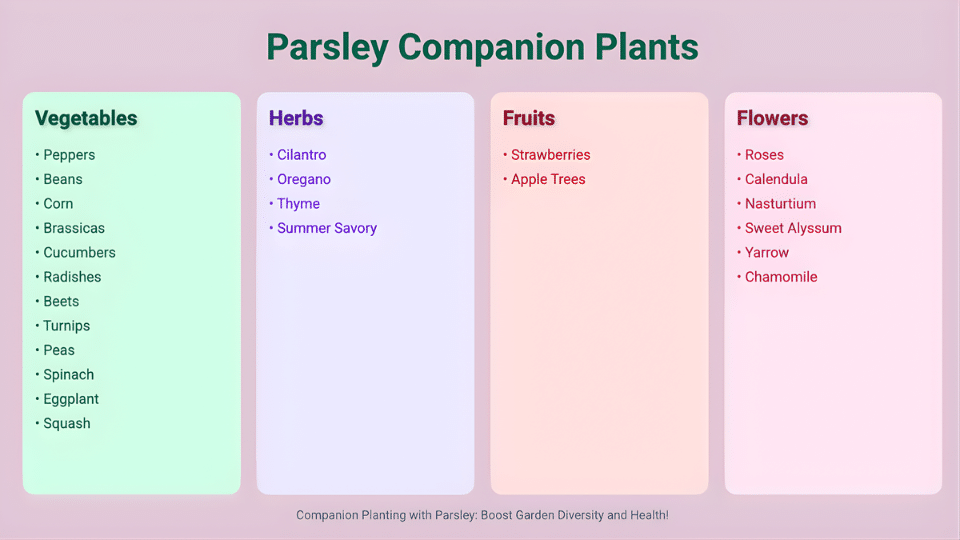
The right companion plants can rebuild your parsley bed into a thriving ecosystem that naturally resists pests, attracts helpful insects, and improves overall garden health.
These plants work alongside parsley to create mutually beneficial growing conditions, each offering unique advantages from pest protection to enhanced soil quality.
1. Tomatoes
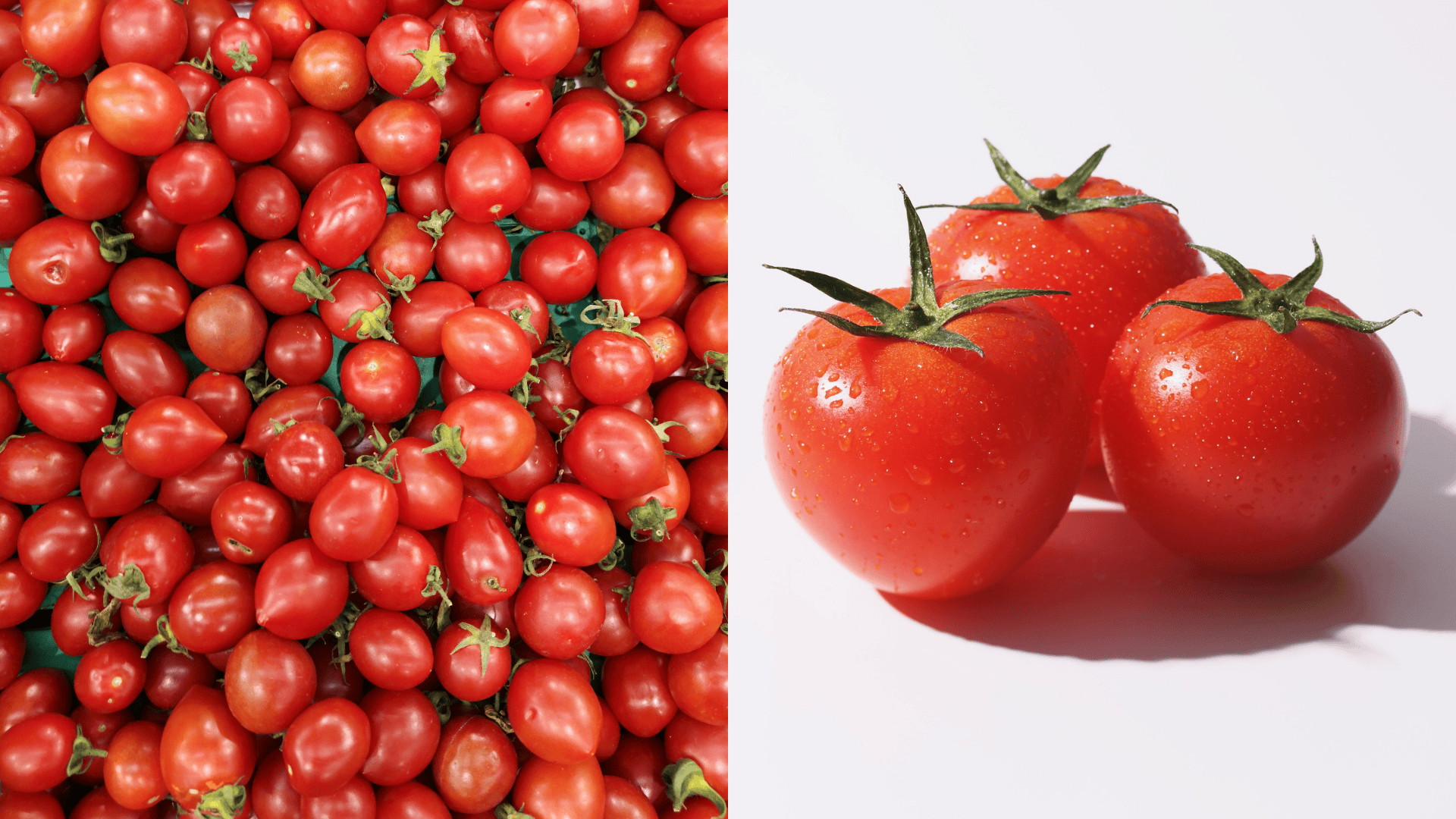
Tomatoes and parsley create a beneficial partnership in the garden, as parsley attracts hoverflies that feed on aphids attacking tomato plants.
Many gardeners report improved tomato flavor when grown alongside parsley.
Tip: Space parsley 12-18 inches from tomato stems to avoid overcrowding.
2. Asparagus
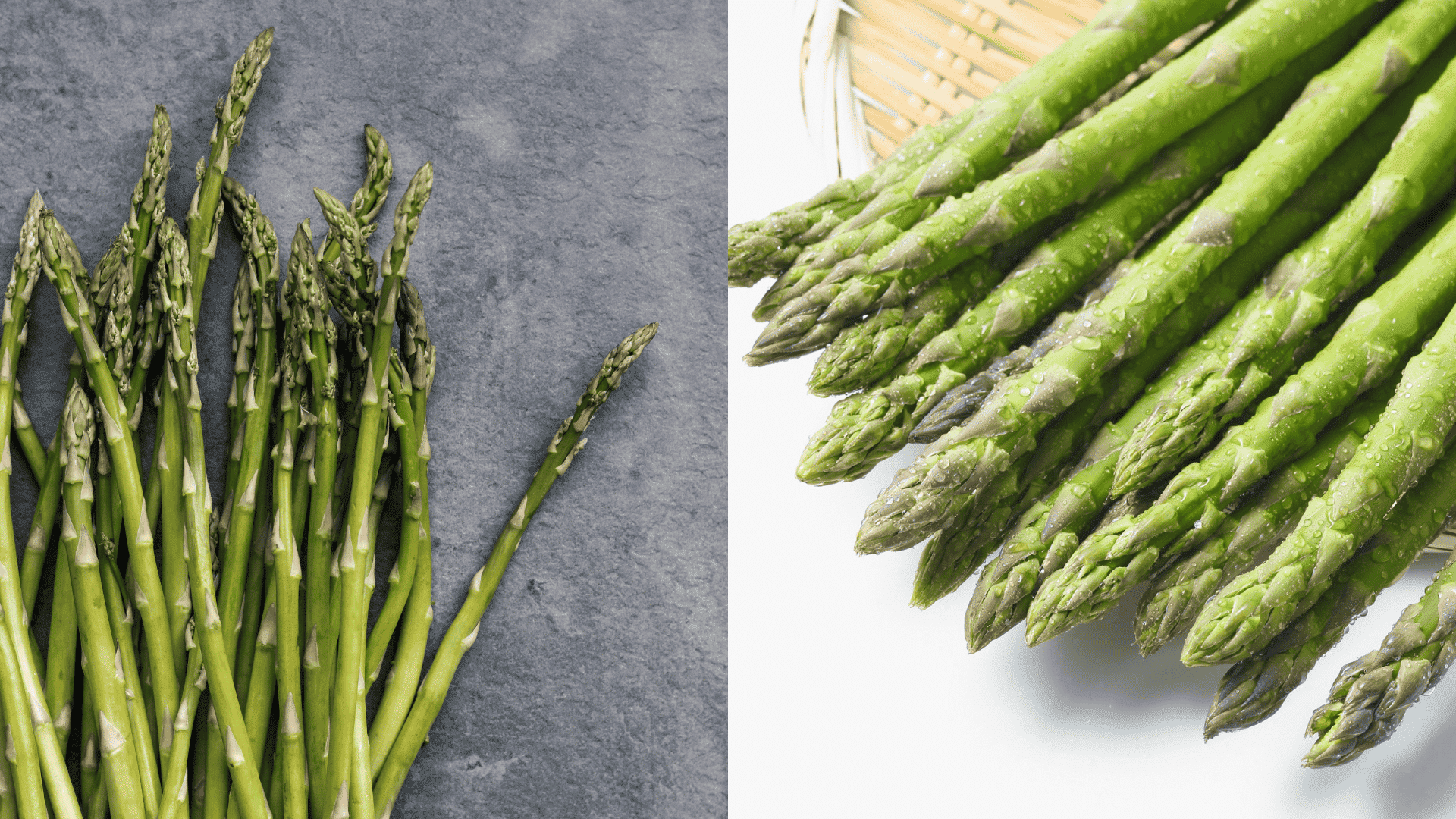
Asparagus thrives with parsley as a companion, as the herb deters asparagus beetles, a major pest for this perennial crop.
Both plants establish deep root systems that coexist without interference.
Tip: Plant parsley in spring after asparagus has emerged for easier placement.
3. Carrots
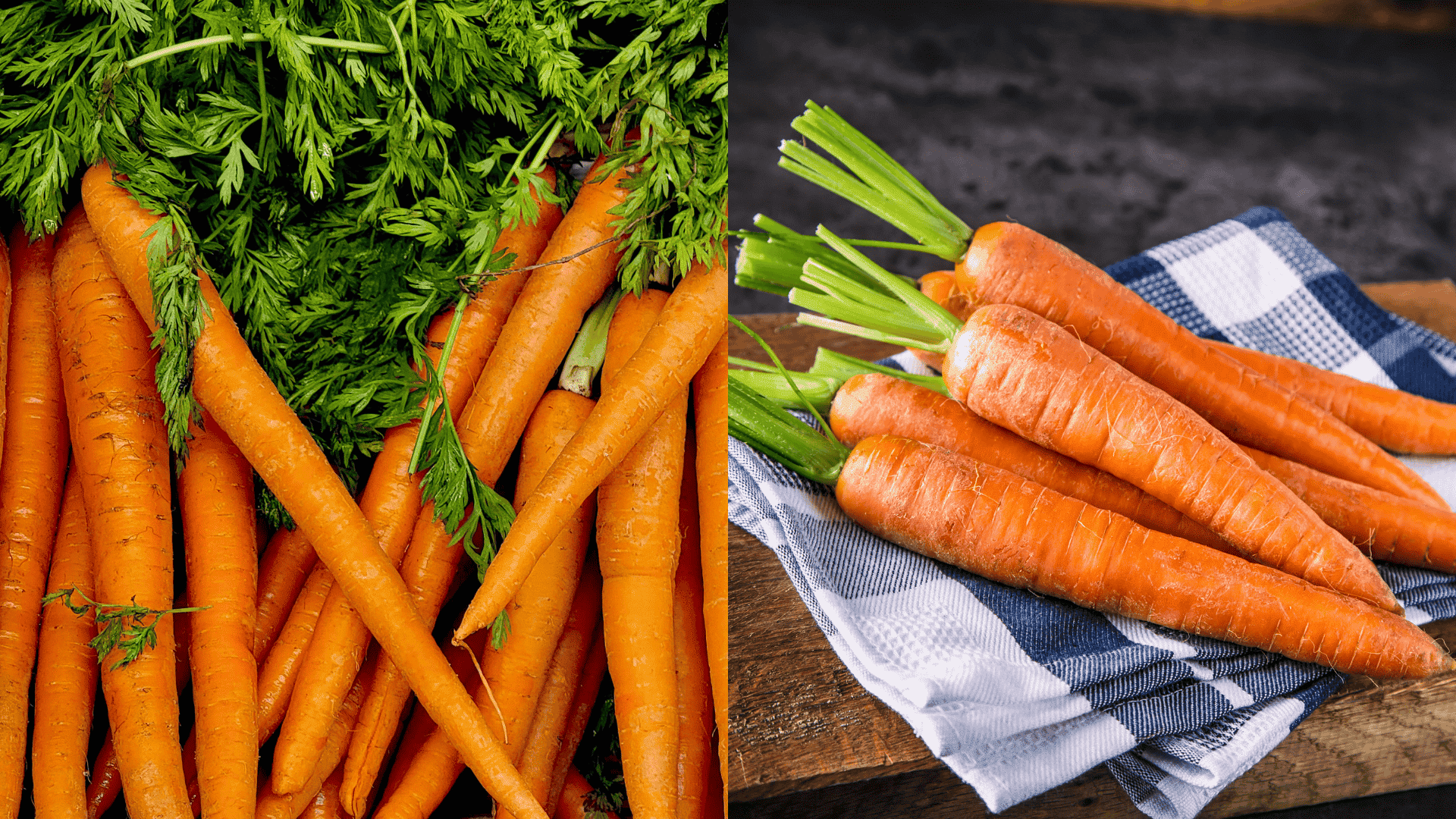
Carrots and parsley belong to the same family and share similar needs, while parsley attracts pollinators to carrot flowers and provides beneficial shade.
Both plants require comparable water and nutrient levels.
Tip: Sow carrot seeds directly alongside established parsley plants for best results.
4. Chives
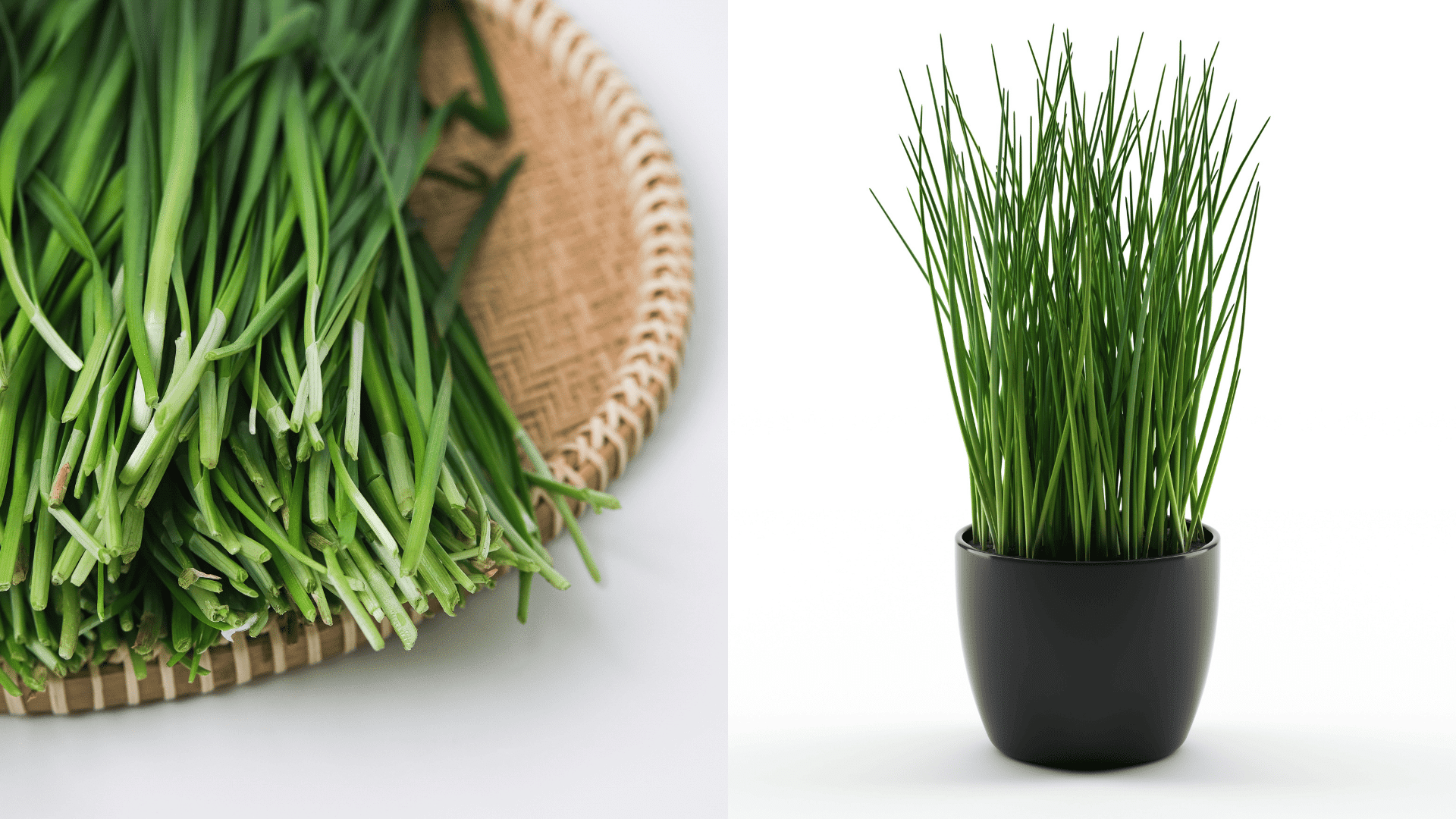
Chives and parsley form a powerful pest-fighting combination, as chives repel aphids while parsley attracts beneficial predators like ladybugs.
This pairing provides multiple layers of natural pest defense.
Tip: Plant chives in clumps near parsley borders for concentrated protection.
5. Basil
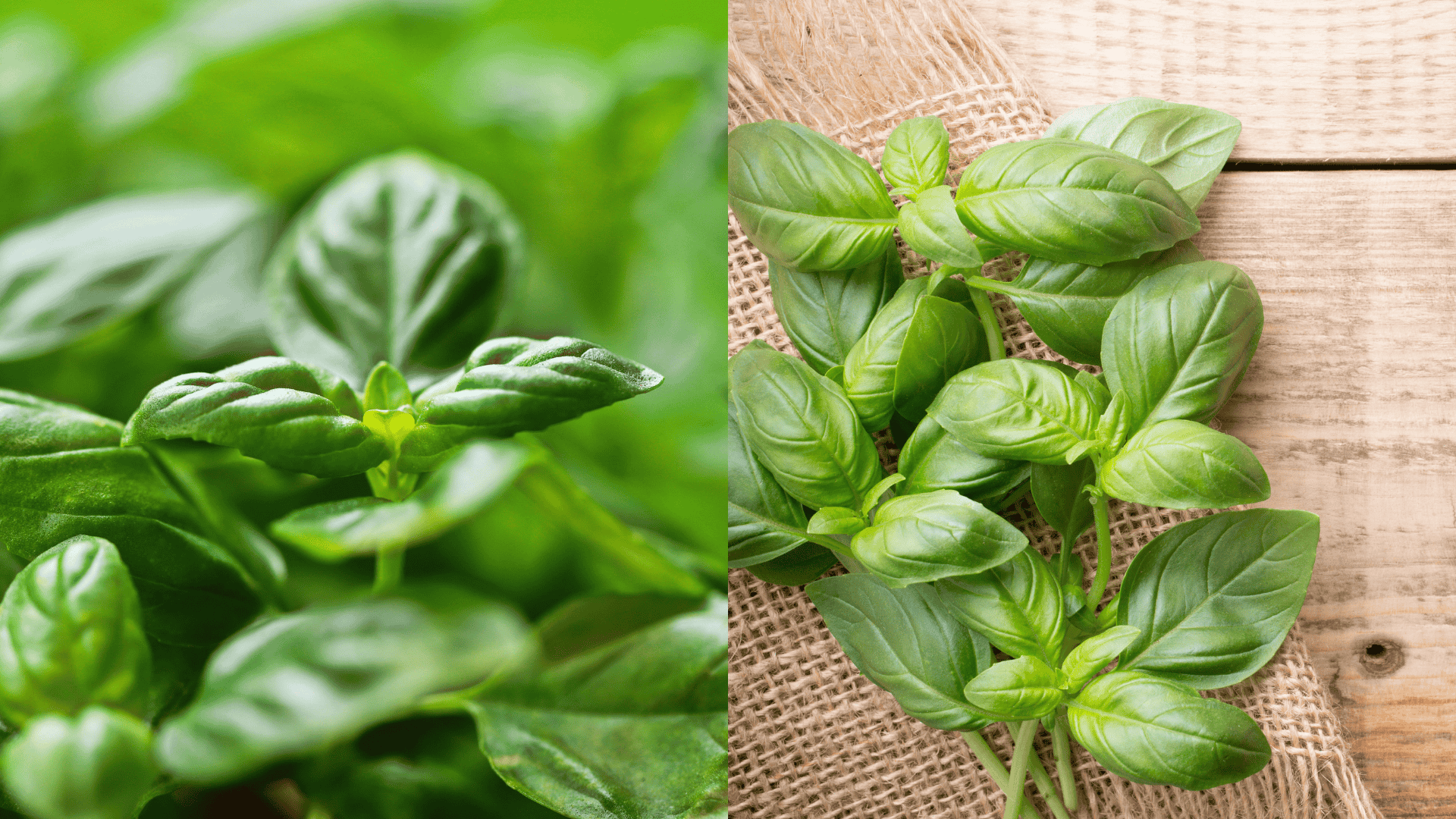
Basil near parsley deters mosquitoes and flying insects effectively, while the herbs have compatible growth habits without competing for resources.
Regular harvesting encourages bushier growth in both plants.
Tip: Pinch off basil flowers to prolong leaf production and maintain benefits.
6. Dill
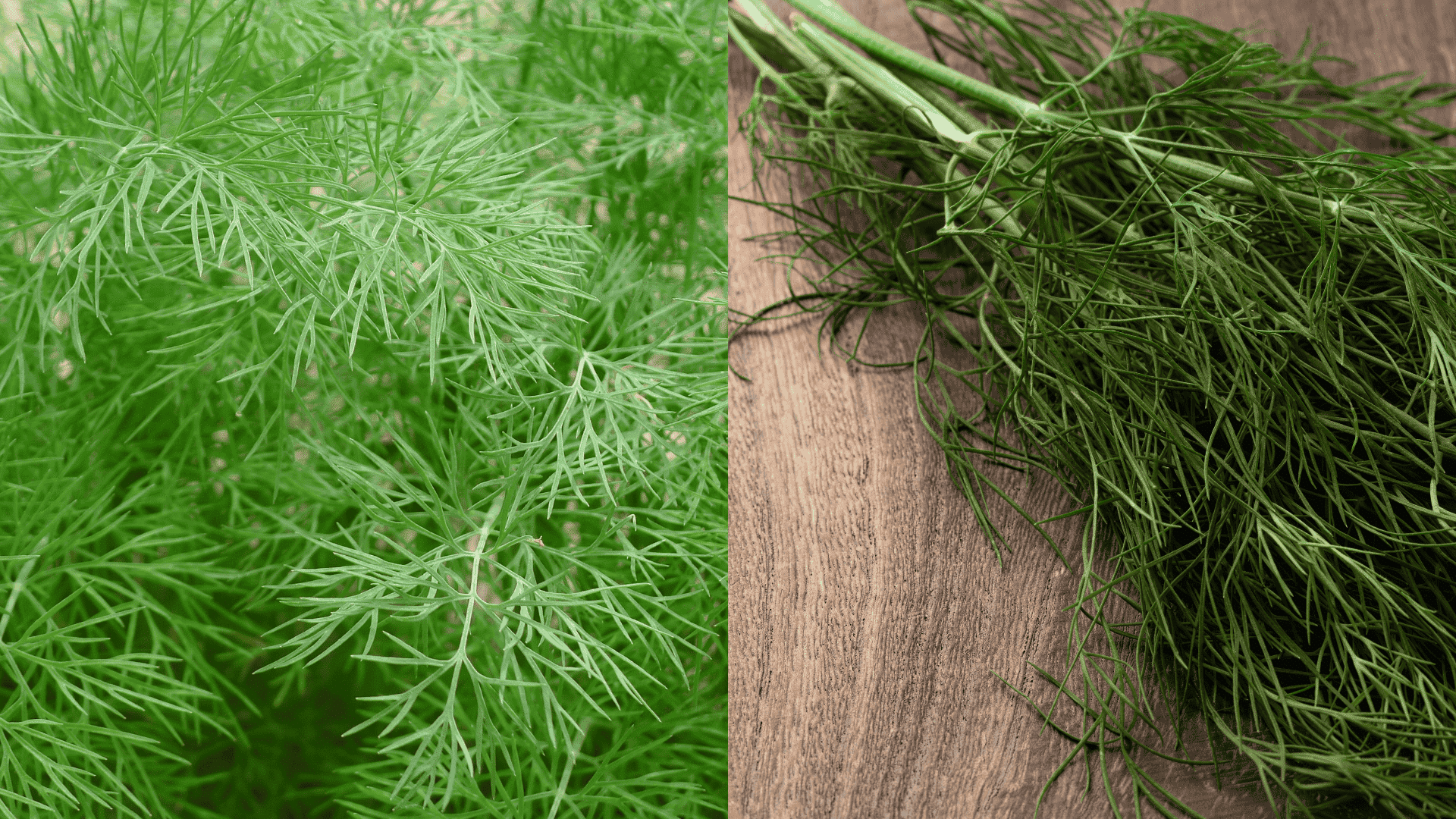
Dill attracts numerous beneficial insects to your garden space, and combined with parsley, they create a haven for pollinators and predators.
Their feathery foliage adds visual interest and textural contrast.
Tip: Allow some dill to flower for maximum beneficial insect attraction.
7. Marigolds
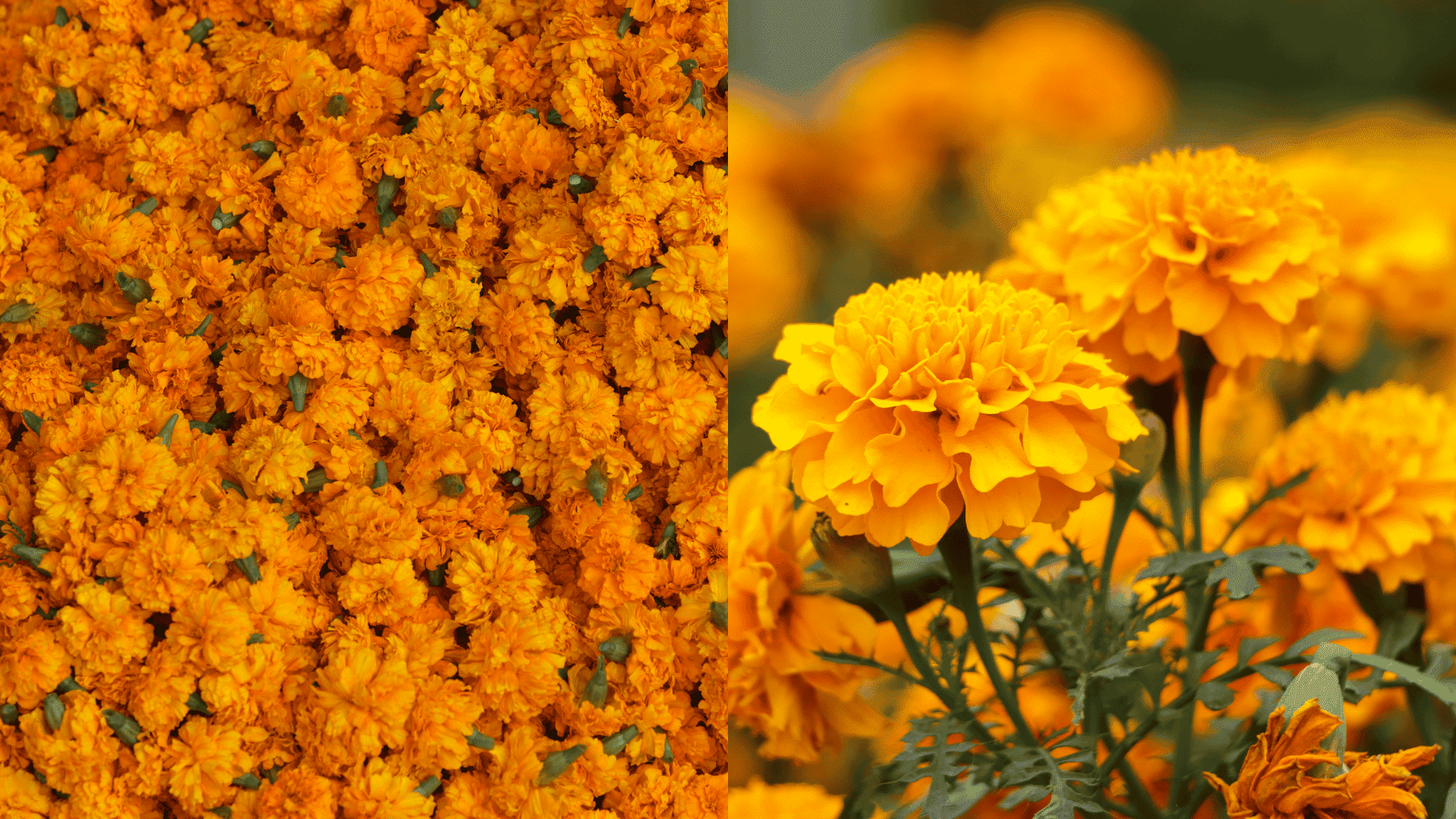
Marigolds repel nematodes and soil-dwelling pests through root compounds, and planting them near parsley provides root protection and visual appeal.
Their blooms attract butterflies and pollinators throughout the season.
Tip: Choose French marigolds for the strongest nematode-repelling properties.
7 Parsley Companion Plants to Avoid
Some plants can hinder parsley’s development through aggressive competition, chemical interference, or incompatible growing requirements.
These seven plants should be kept at a distance from your parsley to prevent stunted growth, nutrient depletion, and reduced yields.
1. Garlic
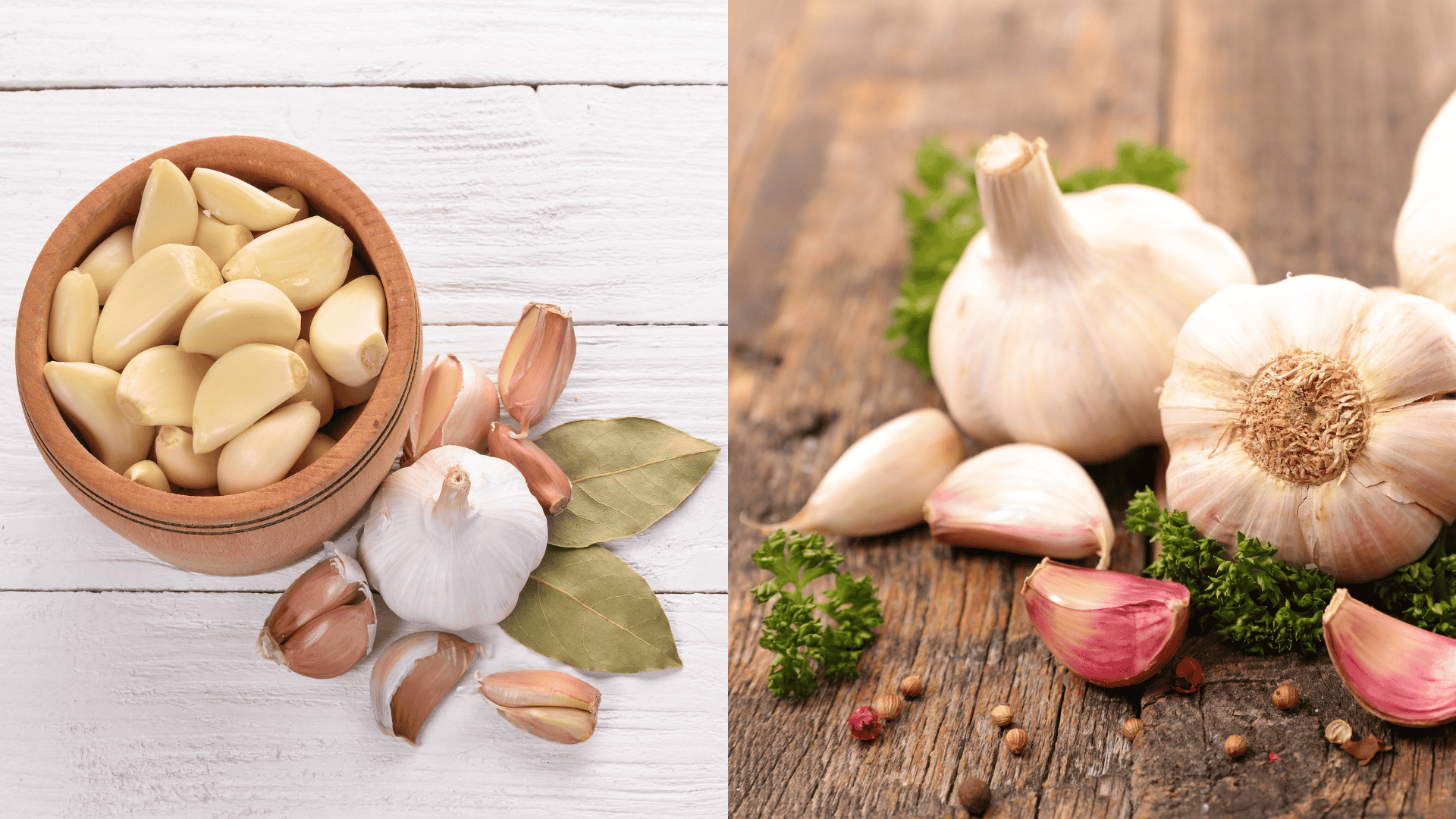
Garlic releases allelopathic compounds that stunt parsley growth, so keep these plants in separate garden areas for best results.
The chemical interference affects parsley’s flavor development and leaf production.
Tip: Maintain at least 2-3 feet of distance if growing both.
2. Onions
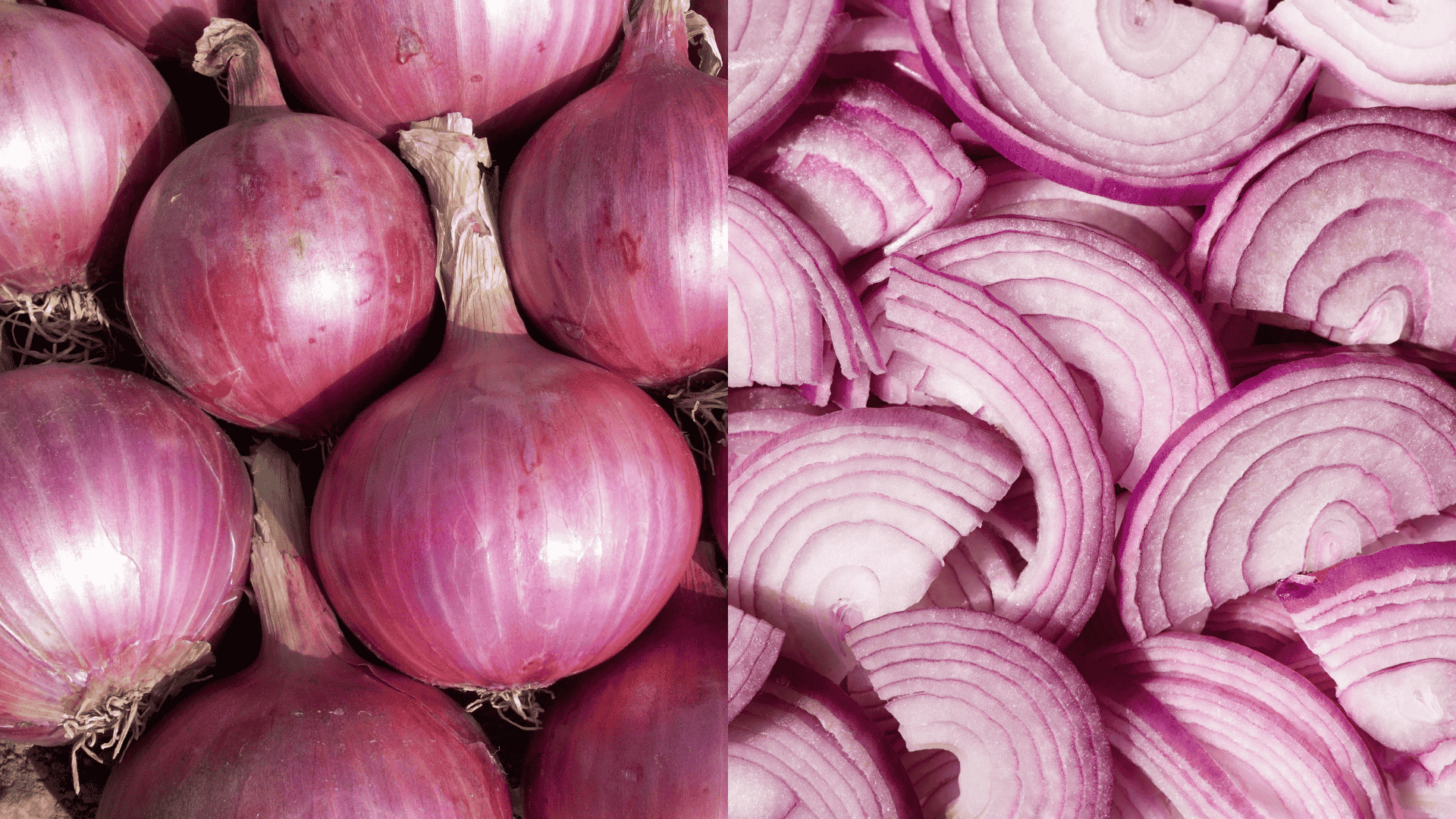
Large onion plantings compete with parsley for nutrients and water, though a few onion plants are acceptable.
Heavy onion cultivation can also alter soil pH unfavorably for herbs.
Tip: Keep onion rows at least 18 inches away from parsley plantings.
3. Leeks
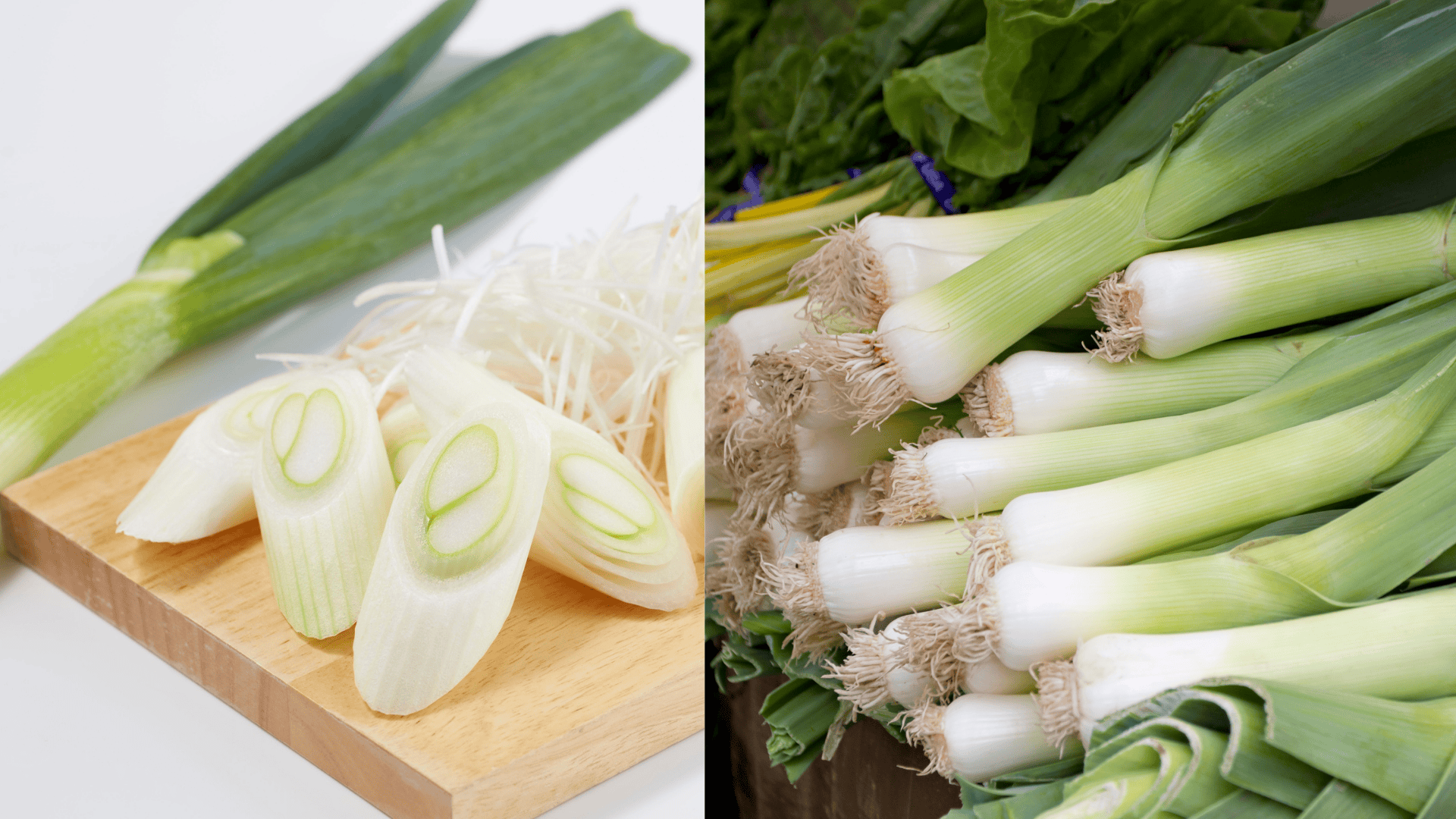
Leeks inhibit parsley through chemical soil interactions, so plant these alliums away from your herb garden entirely.
Like other onion family members, they need dedicated beds.
Tip: Rotate leeks to areas where parsley hasn’t grown recently.
4. Mint
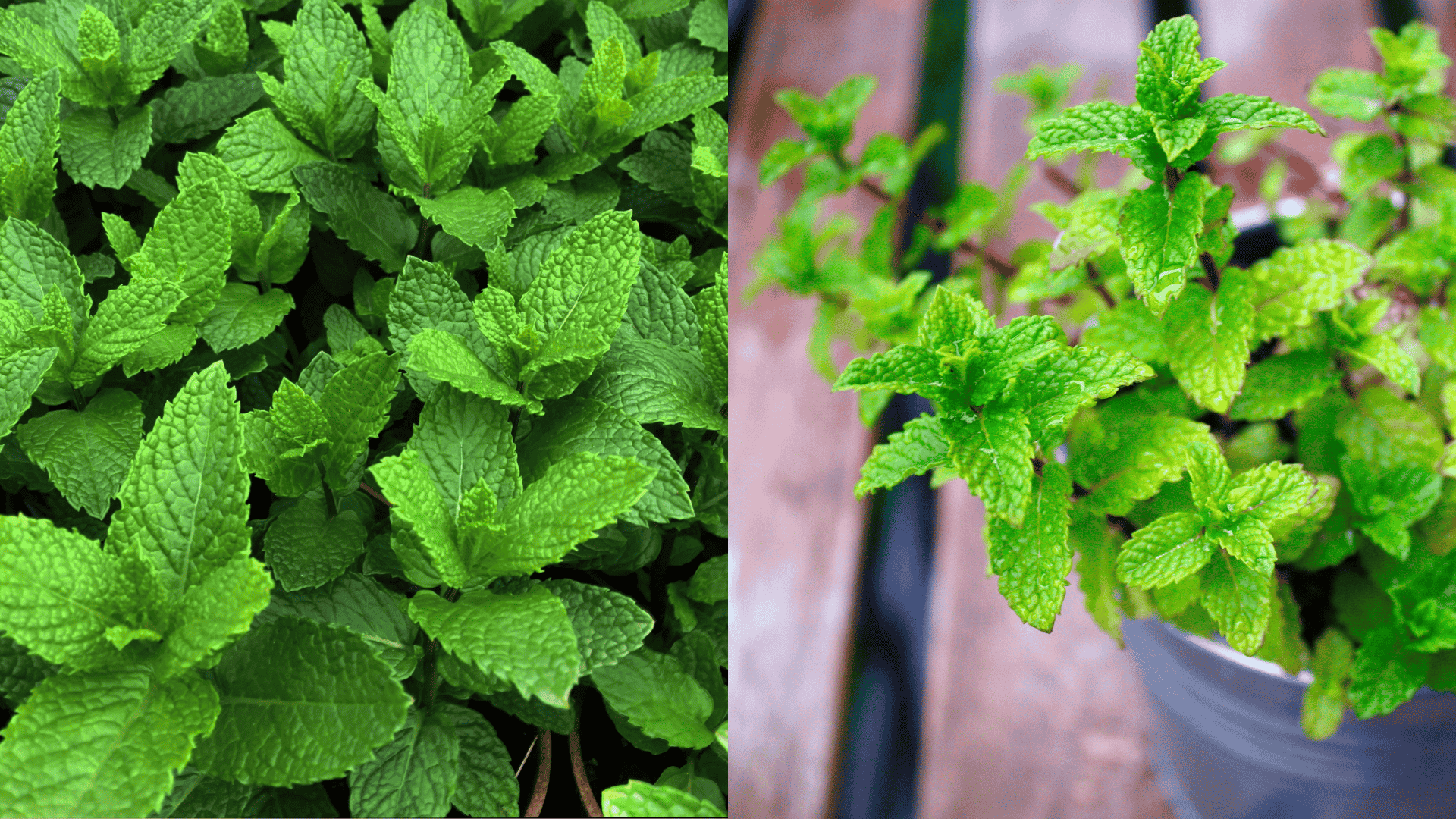
Mint grows aggressively and overshadows parsley quickly, as its invasive roots outcompete parsley for water and nutrients.
Mint can spread up to 2 feet per season through underground runners.
Tip: Use buried barriers or pots to contain mint’s spreading roots.
5. Lettuce
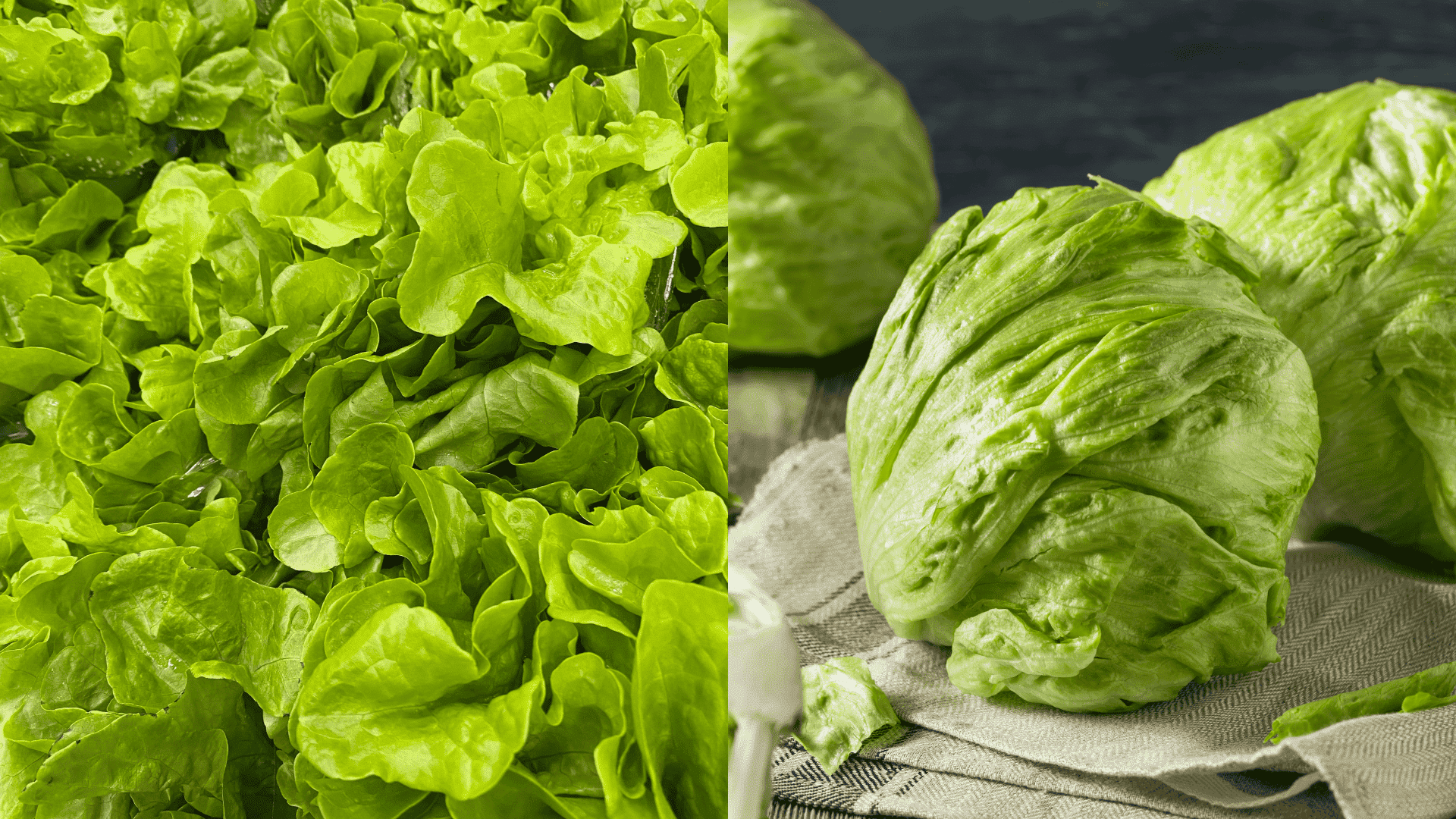
Lettuce may bolt prematurely when planted too close to parsley, as the plants have different water and temperature requirements.
Lettuce needs cooler conditions, while parsley tolerates more heat.
Tip: Separate lettuce and parsley by at least 12 inches.
6. Fennel
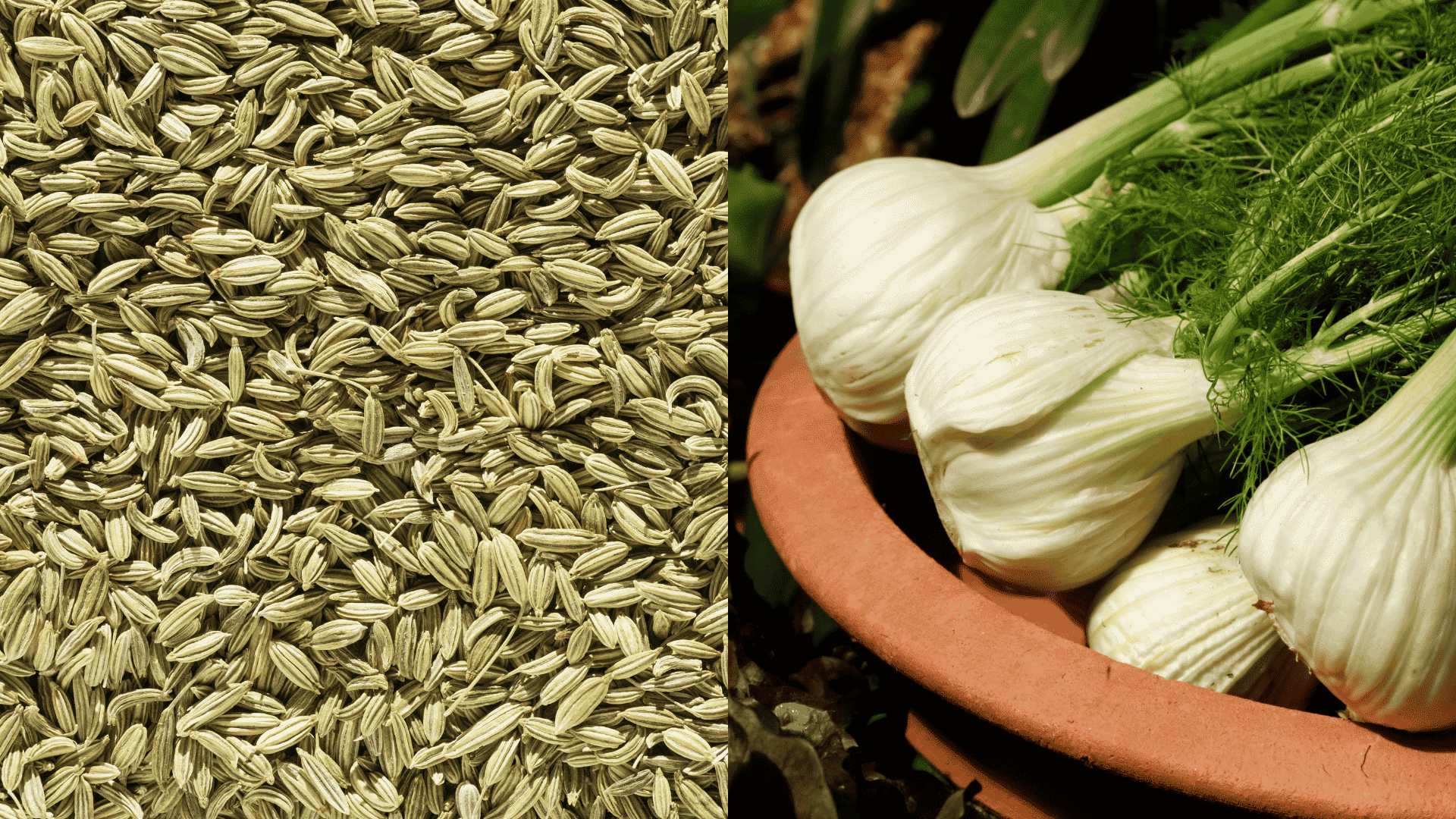
Fennel inhibits most nearby herbs through allelopathic compounds, and it suppresses surrounding plant growth significantly.
Its chemicals can persist in soil even after the plant is removed.
Tip: Plant fennel at least 4 feet from other herbs.
7. Sunflowers
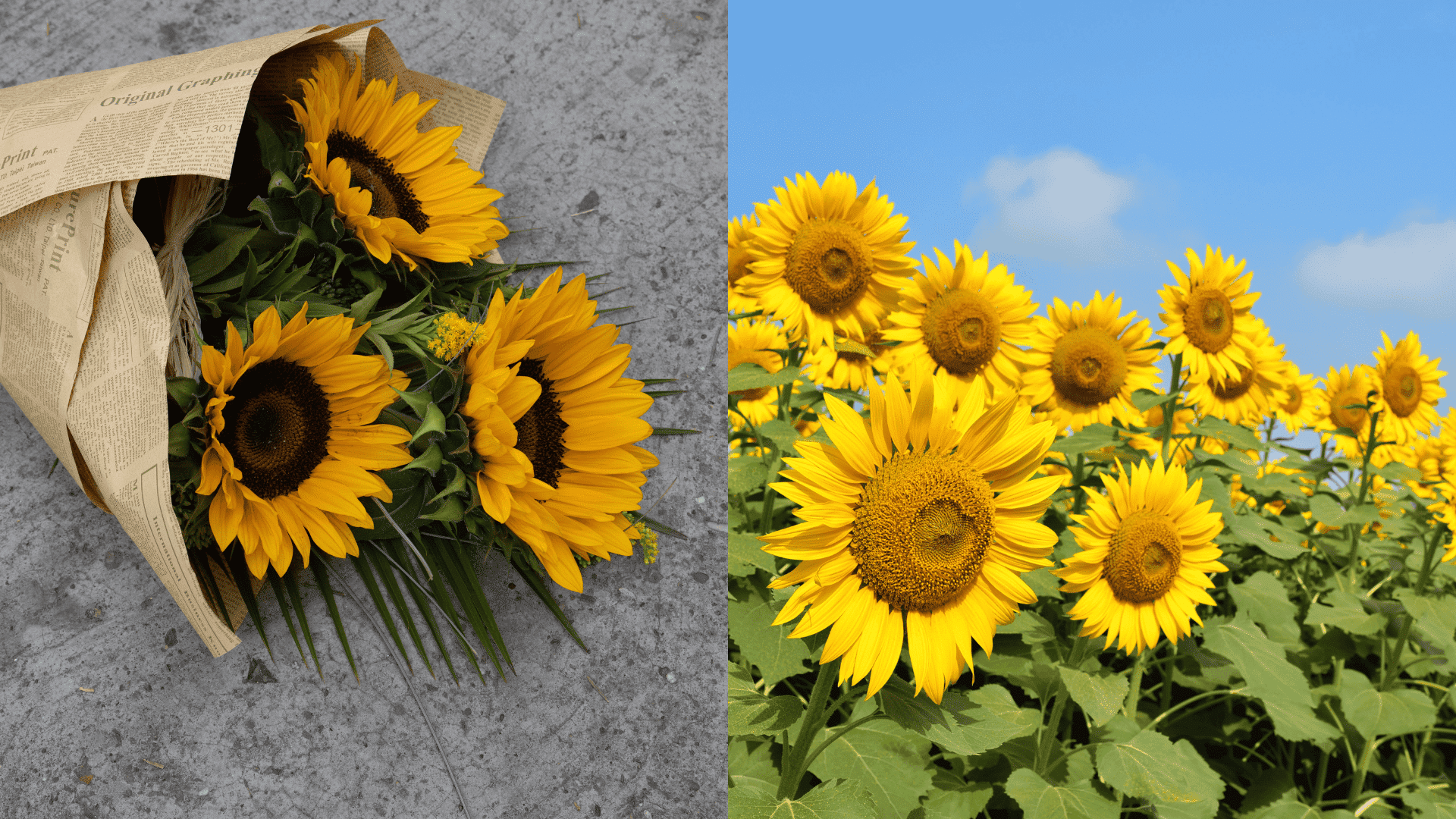
Sunflowers compete for sunlight with tall growth and large leaves, so parsley struggles to receive adequate light near them.
Sunflowers also deplete soil nutrients as heavy feeders.
Tip: Position sunflowers on the north side to avoid shading smaller plants.
Conclusion
Using parsley strategically in your garden creates numerous benefits, from natural pest control to attracting beneficial insects.
Start with the combinations suggested in this guide, then experiment to find what works best in your specific conditions.
Every garden is unique, so observe which pairings thrive and adjust accordingly.
We’d love to hear from you!
What combinations have worked best in your garden?
Share your favorite parsley companion plants and gardening tips in the comments below.
Frequently Asked Questions
How Much Space Should I Leave Between Parsley and Its Companion Plants?
Space requirements vary by plant type. Leave 6-8 inches between parsley and herbs like basil or chives. For larger vegetables like tomatoes, maintain 12-18 inches. Carrots can be planted closer at 4-6 inches.
Can I Grow Parsley Indoors with Companion Plants?
Yes, parsley grows well indoors with companions like basil and chives. Use a container at least 12 inches wide with good drainage, and provide 6-8 hours of bright light daily or use grow lights.
Does Parsley Need Full Sun when Planted with Companions?
Parsley needs 4-6 hours of direct sunlight daily. Most companions like tomatoes, basil, and carrots have similar requirements. In hot climates, parsley benefits from afternoon shade provided by taller companion plants.

